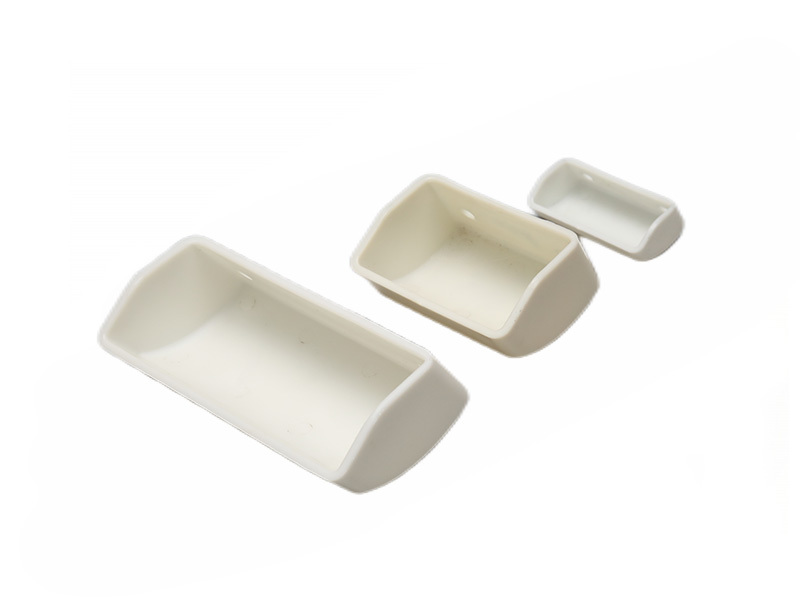What maintenance practices extend scraper chain hopper lifespan?

Introduction
Scraper chain hoppers are integral components in various industrial applications, including mining, agriculture, and waste management. These hoppers are designed to transport bulk materials efficiently, and their longevity is crucial for maintaining operational efficiency and minimizing downtime. Regular maintenance practices play a vital role in extending the lifespan of scraper chain hoppers. This article explores various maintenance strategies that can significantly prolong the life of these essential pieces of equipment.
Understanding Scraper Chain Hoppers
Before delving into maintenance practices, it is essential to understand the basic components and functions of scraper chain hoppers. A typical scraper chain hopper consists of a conveyor chain, flight bars, a drive sprocket, a tail sprocket, and a housing or chute. The conveyor chain, equipped with flight bars, moves along the housing, scraping and conveying materials from one point to another.
Importance of Regular Maintenance
Regular maintenance is crucial for several reasons:
Prevents Downtime: Regular inspections and maintenance can identify potential issues before they lead to equipment failure, reducing unplanned downtime.
Ensures Safety: Well-maintained equipment is less likely to malfunction, reducing the risk of accidents and injuries.
Maximizes Efficiency: Properly maintained scraper chain hoppers operate more efficiently, reducing energy consumption and wear on components.
Extends Lifespan: Consistent maintenance practices can significantly extend the lifespan of the equipment, providing a better return on investment.
Key Maintenance Practices
1. Daily Inspections
Daily inspections are the first line of defense in maintaining scraper chain hoppers. Operators should check for:
Chain Tension: Ensure the chain is properly tensioned. Loose chains can cause misalignment and excessive wear, while overly tight chains can strain the drive system.
Flight Bars: Inspect flight bars for wear, damage, or misalignment. Damaged flight bars can scrape the housing, causing premature wear.
Sprockets: Check the condition of the drive and tail sprockets for wear, damage, or misalignment. Worn sprockets can cause chain skipping and premature chain wear.
Housing and Chute: Look for signs of wear, corrosion, or damage to the housing and chute. Any issues should be addressed promptly to prevent further damage.
Lubrication: Ensure that all moving parts are adequately lubricated. Lack of lubrication can lead to increased friction and wear.
2. Lubrication
Proper lubrication is essential for the smooth operation and longevity of scraper chain hoppers. Key points to consider include:
Type of Lubricant: Use a high-quality lubricant suitable for the operating conditions, such as extreme temperatures or dusty environments.
Application Method: Apply lubricant evenly to all moving parts, including the chain, sprockets, and bearings. Avoid over-lubrication, which can attract dirt and debris.
Frequency: Establish a regular lubrication schedule based on the manufacturer's recommendations and the operating conditions of the equipment.
3. Chain Tensioning
Proper chain tension is critical for the efficient operation of scraper chain hoppers. Key considerations include:
Initial Tensioning: When installing a new chain, ensure it is correctly tensioned according to the manufacturer's specifications.
Regular Adjustment: Over time, chains stretch and require periodic adjustment. Monitor chain tension regularly and adjust as needed.
Tensioning Devices: Use appropriate tensioning devices, such as tensioners or idlers, to maintain proper chain tension.
4. Component Replacement
Regular inspection and timely replacement of worn or damaged components are crucial for maintaining the performance and longevity of scraper chain hoppers. Key components to monitor include:
Flight Bars: Replace flight bars that show signs of excessive wear, damage, or misalignment.
Sprockets: Replace worn or damaged sprockets to prevent chain skipping and ensure proper chain engagement.
Chain Links: Inspect chain links for wear, stretching, or damage. Replace individual links or the entire chain as needed.
Bearings: Regularly inspect and replace bearings that show signs of wear or damage to ensure smooth operation.
5. Cleaning and Debris Removal
Regular cleaning is essential to prevent the buildup of debris and material, which can cause wear and operational issues. Key practices include:
Daily Cleaning: Remove any accumulated material from the housing, chute, and chain after each operation.
Scheduled Cleaning: Perform more thorough cleanings periodically to remove stubborn debris and prevent corrosion.
Material Flow: Ensure proper material flow to prevent blockages and reduce the risk of material buildup.
6. Inspection and Monitoring Tools
Utilizing the right tools can enhance the effectiveness of maintenance practices. Key tools include:
Chain Wear Gauges: Use chain wear gauges to measure chain elongation and determine when to replace the chain.
Alignment Tools: Use alignment tools to ensure that the chain, sprockets, and flight bars are properly aligned.
Visual Inspection Tools: Use flashlights, mirrors, and borescopes to inspect hard-to-reach areas for signs of wear or damage.
7. Training and Documentation
Proper training and documentation are essential for effective maintenance practices. Key considerations include:
Operator Training: Train operators on the proper operation and basic maintenance of scraper chain hoppers.
Maintenance Training: Provide maintenance personnel with comprehensive training on inspection, repair, and replacement procedures.
Maintenance Logs: Keep detailed records of all maintenance activities, including inspections, repairs, and component replacements. This information can help identify trends and schedule future maintenance.
Conclusion
Regular maintenance is crucial for extending the lifespan of scraper chain hoppers. By implementing daily inspections, proper lubrication, chain tensioning, component replacement, cleaning, and utilizing the right tools, operators can ensure the efficient and reliable operation of these essential pieces of equipment. Additionally, investing in operator and maintenance training and maintaining detailed documentation can further enhance the effectiveness of maintenance practices. By prioritizing maintenance, industries can maximize the performance and longevity of their scraper chain hoppers, reducing downtime and operational costs.
Related News

